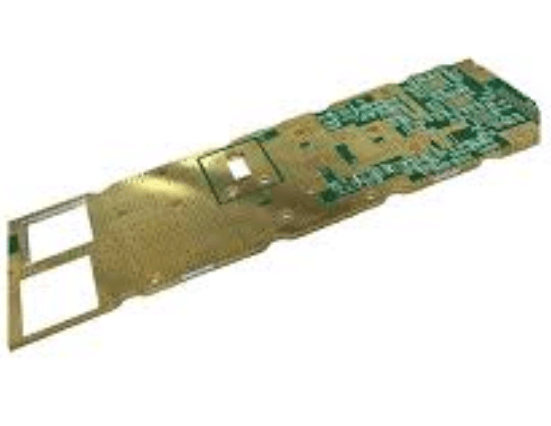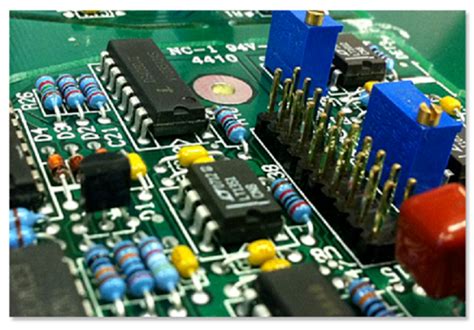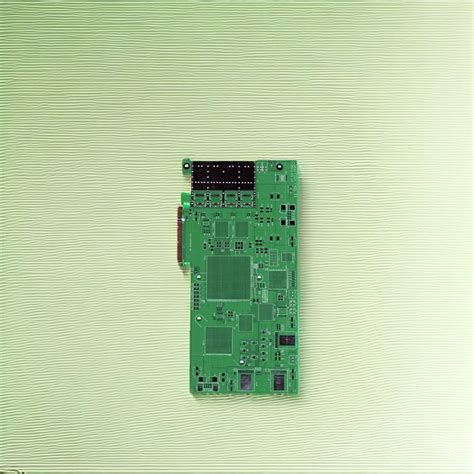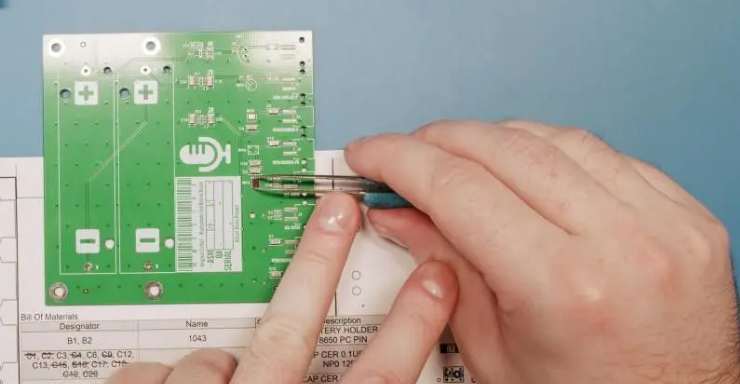Rogers 4350 pcb material
Advantages Of Using Rogers 4350 PCB Material In High-Frequency Applications
Rogers 4350 PCB material has garnered significant attention in the realm of high-frequency applications, primarily due to its exceptional performance characteristics. One of the foremost advantages of using Rogers 4350 is its low dielectric constant (Dk), which is crucial for maintaining signal integrity at high frequencies.
The material’s Dk is stable over a wide range of frequencies, ensuring consistent performance and minimal signal loss. This stability is particularly beneficial in applications such as RF and microwave circuits, where even minor variations in dielectric properties can lead to significant performance degradation.
In addition to its low dielectric constant, Rogers 4350 also boasts a low dissipation factor (Df).
dissipation factor is a measure of energy loss within the material, and a lower Df indicates that less energy is lost as heat. This characteristic is vital for high-frequency applications, as it ensures that the signal strength remains robust over longer distances. Consequently, devices utilizing Rogers 4350 can achieve higher efficiency and reliability, which are critical parameters in telecommunications, aerospace, and defense industries.
Another notable advantage of Rogers 4350 is its excellent thermal management properties.
High-frequency circuits often generate substantial amounts of heat, and effective thermal management is essential to prevent overheating and ensure long-term reliability. Rogers 4350 exhibits a high thermal conductivity, which facilitates efficient heat dissipation. This property not only enhances the performance of the PCB but also extends the lifespan of the components mounted on it. Furthermore, the material’s thermal stability ensures that it can withstand the rigors of high-temperature environments without significant degradation.
Mechanical robustness is another key attribute of Rogers 4350.
The material exhibits excellent dimensional stability, which means it maintains its shape and size even under varying environmental conditions. This stability is crucial for high-frequency applications, where precise alignment and consistent spacing between components are necessary to maintain optimal performance. Additionally, Rogers 4350 is resistant to moisture absorption, which can otherwise lead to changes in dielectric properties and compromise the integrity of the circuit.
Moreover, Rogers 4350 is compatible with a wide range of fabrication processes, making it a versatile choice for PCB manufacturers.
It can be easily integrated into existing production lines without requiring significant modifications, thereby reducing manufacturing costs and lead times. The material’s compatibility with standard PCB fabrication techniques also ensures that designers have the flexibility to create complex and high-density circuit layouts, which are often required in advanced electronic systems.
The environmental stability of Rogers 4350 further enhances its suitability for high-frequency applications.
The material exhibits minimal variation in its electrical properties over a wide temperature range, ensuring consistent performance in diverse operating conditions. This stability is particularly advantageous in applications such as satellite communications and radar systems, where devices are exposed to extreme temperatures and must maintain reliable operation.
In conclusion, the advantages of using Rogers 4350 PCB material in high-frequency applications are manifold. Its low dielectric constant and dissipation factor ensure superior signal integrity and efficiency, while its excellent thermal management properties enhance reliability and longevity. The material’s mechanical robustness and compatibility with standard fabrication processes further contribute to its appeal, making it a preferred choice for designers and manufacturers alike. As high-frequency applications continue to evolve and demand ever-higher performance, Rogers 4350 stands out as a material that can meet these stringent requirements with ease.

Comparing Rogers 4350 PCB Material With Other High-Performance Substrates
Rogers 4350 PCB material is renowned in the electronics industry for its exceptional performance characteristics, making it a preferred choice for high-frequency applications. When comparing Rogers 4350 to other high-performance substrates, several key factors come into play, including dielectric constant, thermal management, and mechanical stability. Understanding these differences is crucial for engineers and designers aiming to optimize their circuit designs.
To begin with, the dielectric constant (Dk) of Rogers 4350 is one of its most significant attributes.
With a Dk of approximately 3.48, it offers a stable and predictable performance across a wide frequency range. This stability is essential for high-frequency applications such as RF and microwave circuits, where signal integrity is paramount. In contrast, other high-performance materials like FR-4, which is commonly used in standard PCB manufacturing, have a higher and less stable dielectric constant, typically around 4.5. This variability can lead to signal loss and impedance mismatches, making FR-4 less suitable for high-frequency applications.
Moreover, thermal management is another critical area where Rogers 4350 excels.
The material has a low coefficient of thermal expansion (CTE), which ensures minimal dimensional changes with temperature fluctuations. This property is particularly beneficial in environments where the PCB is subjected to varying thermal conditions. In comparison, materials like PTFE (Polytetrafluoroethylene) also offer good thermal properties but can be more challenging to process due to their softer nature. Rogers 4350 strikes a balance by providing excellent thermal stability while being easier to handle during manufacturing.
Additionally, mechanical stability is a vital consideration when selecting a PCB substrate.
Rogers 4350 exhibits robust mechanical properties, including high tensile strength and resistance to mechanical stress. This durability ensures that the PCB can withstand the rigors of assembly and operation without compromising performance. On the other hand, ceramic-based substrates, while offering excellent thermal and electrical properties, can be brittle and prone to cracking under mechanical stress. This makes Rogers 4350 a more versatile option for a broader range of applications.
Furthermore, the loss tangent or dissipation factor of Rogers 4350 is notably low, around 0.0037 at 10 GHz.
This low loss tangent means that the material exhibits minimal signal loss, which is crucial for maintaining signal integrity in high-frequency circuits. In contrast, materials like FR-4 have a higher loss tangent, leading to greater signal attenuation and reduced performance in high-frequency applications. This characteristic of Rogers 4350 makes it particularly advantageous for applications such as antennas, power amplifiers, and other RF components.
In addition to these technical advantages, the manufacturability of Rogers 4350 is another aspect worth considering.
The material is compatible with standard PCB fabrication processes, which simplifies production and reduces costs. This compatibility is not always the case with other high-performance materials, which may require specialized equipment and processes, thereby increasing manufacturing complexity and expense.
In conclusion, when comparing Rogers 4350 PCB material with other high-performance substrates, it becomes evident that Rogers 4350 offers a unique combination of stable dielectric properties, excellent thermal management, robust mechanical stability, and low signal loss. These attributes make it an ideal choice for high-frequency applications where performance and reliability are critical. While other materials may excel in specific areas, Rogers 4350 provides a well-rounded solution that meets the diverse needs of modern electronic designs.

Design Considerations For Rogers 4350 PCB Material In RF Circuits
When designing RF circuits, the choice of PCB material is crucial to achieving optimal performance. Rogers 4350 is a popular choice among engineers due to its excellent electrical properties and reliability. This material, known for its low dielectric constant and low loss tangent, is particularly well-suited for high-frequency applications. However, several design considerations must be taken into account to fully leverage the benefits of Rogers 4350 in RF circuits.
Firstly, the dielectric constant (Dk) of Rogers 4350 is relatively stable over a wide frequency range, which is essential for maintaining signal integrity in RF applications.
The Dk value of approximately 3.48 ensures minimal signal distortion, making it ideal for high-speed and high-frequency circuits. Additionally, the low loss tangent of 0.0037 at 10 GHz minimizes signal attenuation, thereby enhancing the overall performance of the circuit. These properties make Rogers 4350 a preferred material for applications such as antennas, power amplifiers, and microwave components.
Another critical aspect to consider is the thermal management of the PCB.
Rogers 4350 exhibits excellent thermal stability, with a coefficient of thermal expansion (CTE) that closely matches that of copper. This compatibility reduces the risk of delamination and ensures the longevity of the PCB under varying thermal conditions. Moreover, the material’s high thermal conductivity aids in efficient heat dissipation, which is vital for maintaining the performance and reliability of RF circuits operating at high power levels.
The mechanical properties of Rogers 4350 also play a significant role in the design process.
Its robust mechanical strength and dimensional stability make it suitable for complex multilayer PCB designs. The material’s ability to withstand mechanical stress without significant deformation ensures the structural integrity of the PCB, even in demanding environments. This is particularly important for applications that require precise impedance control, as any mechanical deformation can adversely affect the electrical performance of the circuit.
In addition to its electrical and mechanical properties, the manufacturability of Rogers 4350 is another important consideration.
The material is compatible with standard PCB fabrication processes, which simplifies the manufacturing workflow and reduces production costs. However, it is essential to follow specific guidelines to ensure optimal results. For instance, the use of appropriate drilling parameters and careful handling during the lamination process can prevent defects such as voids and delamination. Furthermore, the choice of surface finish and solder mask materials should be compatible with Rogers 4350 to avoid any adverse effects on the PCB’s performance.
The environmental stability of Rogers 4350 is another factor that cannot be overlooked.
the material’s resistance to moisture absorption ensures consistent electrical performance even in humid conditions. This property is particularly beneficial for outdoor applications, where exposure to varying environmental conditions is inevitable. Additionally, Rogers 4350’s resistance to chemical exposure and its low outgassing properties make it suitable for use in harsh industrial environments and aerospace applications.
In conclusion, the design considerations for Rogers 4350 PCB material in RF circuits encompass a range of factors, including its electrical properties, thermal management, mechanical strength, manufacturability, and environmental stability. By carefully addressing these aspects, engineers can fully exploit the advantages of Rogers 4350, resulting in high-performance and reliable RF circuits. The material’s unique combination of properties makes it an excellent choice for a wide array of high-frequency applications, ensuring that the final product meets the stringent demands of modern RF technology.

Thermal Management Techniques For Rogers 4350 PCB Material
Rogers 4350 PCB material is renowned for its exceptional performance in high-frequency applications, making it a preferred choice for designers and engineers in the electronics industry. However, one of the critical aspects that must be addressed when working with Rogers 4350 is thermal management. Effective thermal management techniques are essential to ensure the reliability and longevity of electronic devices, particularly those operating in demanding environments.
To begin with, understanding the thermal properties of Rogers 4350 is crucial.
This material exhibits a relatively low thermal conductivity compared to other high-frequency laminates, which can pose challenges in dissipating heat generated by electronic components. Consequently, designers must employ various strategies to manage heat effectively and maintain optimal operating temperatures.
One fundamental technique involves the use of thermal vias.
These are small, plated holes that connect the top and bottom layers of a PCB, allowing heat to transfer from the surface-mounted components to the inner layers and ultimately to a heat sink or thermal plane. By strategically placing thermal vias beneath heat-generating components, designers can significantly enhance heat dissipation and prevent localized hotspots.
In addition to thermal vias, the incorporation of heat sinks is another effective method for managing thermal performance.
Heat sinks are typically made of materials with high thermal conductivity, such as aluminum or copper, and are attached to the PCB to absorb and dissipate heat away from critical components. When designing with Rogers 4350, it is essential to ensure that the heat sink is properly sized and positioned to maximize its effectiveness. Moreover, the use of thermal interface materials, such as thermal pads or pastes, can improve the thermal connection between the heat sink and the PCB, further enhancing heat transfer.
Another important consideration is the layout and design of the PCB itself.
By optimizing the placement of components and routing of traces, designers can minimize thermal resistance and improve heat dissipation. For instance, placing high-power components away from each other and ensuring adequate spacing can reduce the risk of thermal coupling, where heat from one component affects the performance of adjacent components. Additionally, using wider traces and larger copper planes can help distribute heat more evenly across the PCB, preventing localized overheating.
Furthermore, the choice of solder mask and surface finish can also impact thermal management.
Solder masks with high thermal conductivity can aid in heat dissipation, while certain surface finishes, such as immersion silver or gold, can provide better thermal performance compared to traditional finishes like HASL (Hot Air Solder Leveling). These materials not only improve thermal conductivity but also enhance the overall reliability and performance of the PCB.
Lastly, active cooling methods, such as forced air or liquid cooling, can be employed in situations where passive techniques are insufficient.
Forced air cooling involves the use of fans or blowers to increase airflow over the PCB, thereby enhancing heat dissipation. Liquid cooling, on the other hand, utilizes a liquid coolant circulated through a network of tubes or channels to absorb and remove heat from the PCB. While these methods can be more complex and costly, they are highly effective in managing thermal performance in high-power applications.
In conclusion, effective thermal management is paramount when working with Rogers 4350 PCB material. By employing a combination of techniques, including thermal vias, heat sinks, optimized PCB layout, appropriate solder masks and surface finishes, and active cooling methods, designers can ensure that their electronic devices operate reliably and efficiently, even in the most demanding environments. Through careful consideration and implementation of these strategies, the challenges associated with the thermal properties of Rogers 4350 can be successfully mitigated, leading to enhanced performance and longevity of electronic systems.






